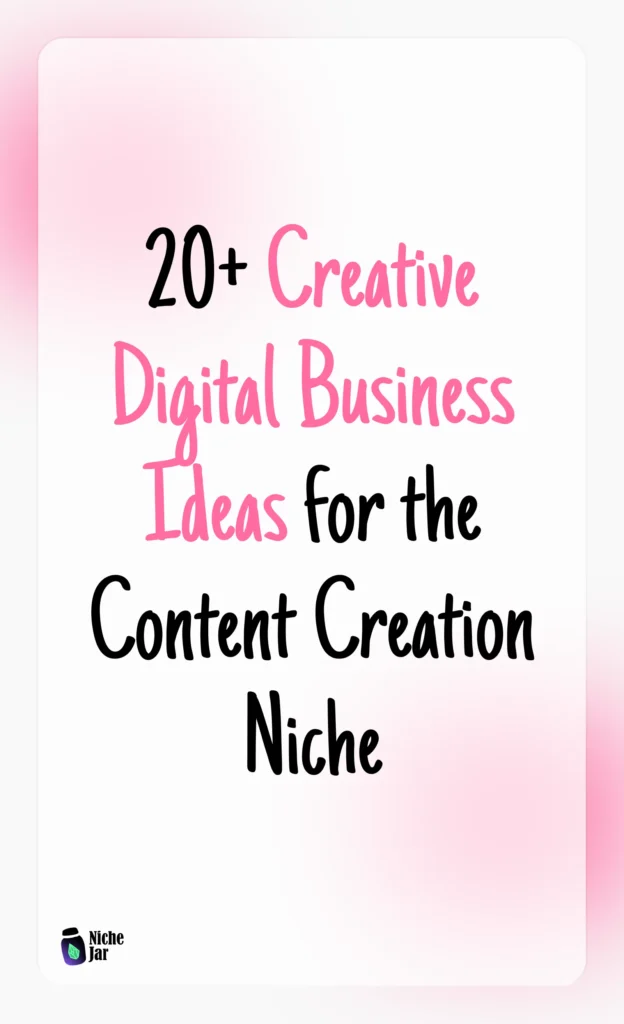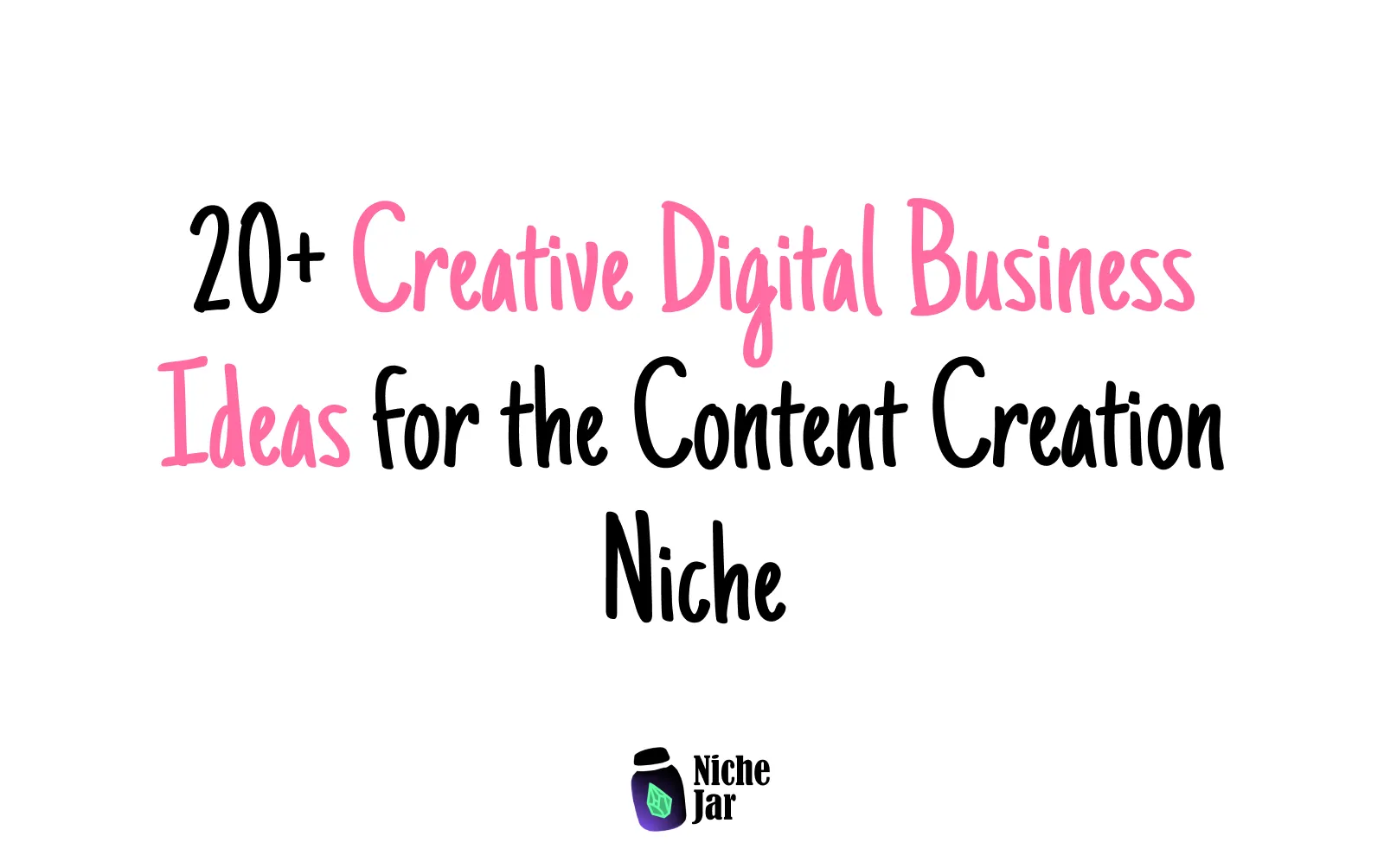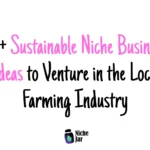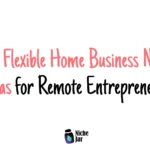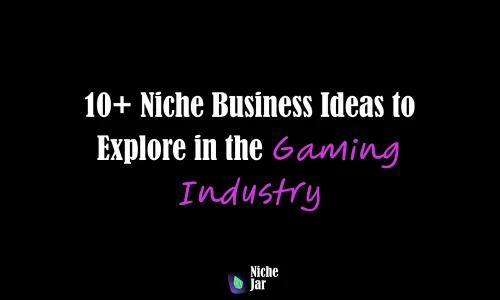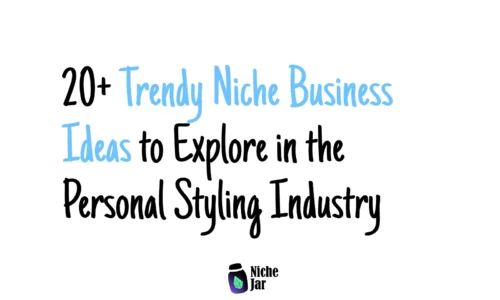- Senia
- 0 Comments
- 512 Views
Have you ever wondered how everyday people turn content creation into real income? From what I’ve seen, the digital world is full of opportunities, but sometimes it feels overwhelming to know where to begin. This guide on creative digital business ideas for the content creation niche shares practical, humble ways to get started, no matter your background.
Content creation has grown into one of the most exciting spaces for building online income. Platforms like YouTube, TikTok, Instagram, and even blogs have shown us that ordinary people—teachers, parents, travelers, and hobbyists—can share their passions and create businesses around them. Still, many of us wonder, how can I actually make money as a content creator without being famous?
From what I’ve noticed, content creation doesn’t have to be about going viral. Instead, it can be about finding a small, profitable niche and serving it well. For example, a simple blog about home gardening can attract loyal readers, while a YouTube channel teaching basic cooking skills can grow into a full-time income stream. What matters most is consistency, value, and a willingness to learn along the way.
This post brings together over 20 creative digital business ideas for content creators. We’ll go beyond the surface and look at practical strategies:
- Step-by-step guides for each idea
- Startup costs to expect
- Monetization methods like affiliate marketing, digital products, and memberships
- Challenges and solutions (because it’s never as simple as it looks)
- Realistic examples of how others have succeeded without massive followings
I believe this could help anyone who’s curious about turning creativity into income, whether you want a side hustle or dream of building a full-time digital business.
Let’s dive into each idea step by step.
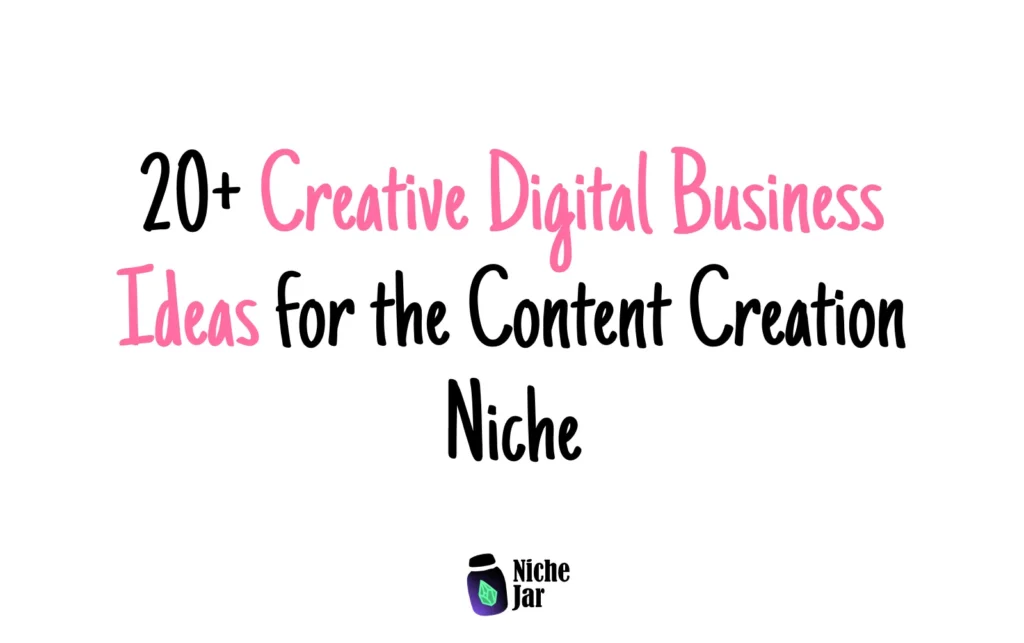
1. Niche Blogging for Passive Income
Why it works: Blogging is still alive and well. From what I’ve seen, blogs focused on a very specific niche (e.g., gluten-free baking, budget travel tips, or DIY crafts) can bring in steady income through ads and affiliate links.
How to start:
- Pick a narrow niche where people are actively searching for answers.
- Use WordPress or Squarespace to set up your site (cost: ~$100/year for hosting).
- Write SEO-friendly posts targeting “long-tail keywords” like “easy gluten-free bread recipes for beginners.”
- Monetize with Google AdSense, affiliate links (Amazon Associates, niche programs), or your own ebooks.
Challenges & solutions: Blogging takes time before traffic grows. My suggestion is to commit to at least 6 months of consistent posting. Using SEO tools like Ubersuggest or Ahrefs can help you target less competitive topics.
Monetization methods: Ads, affiliate marketing, sponsored content, digital product sales.
Example: A teacher who started a blog about budget homeschooling resources grew her site to 50,000 monthly visitors and now makes steady affiliate income from recommended books and tools.
Image alt: person typing blog post on laptop –

2. YouTube Channel for Evergreen Tutorials
Why it works: YouTube rewards searchable, evergreen content. A small channel teaching “how to use Excel,” “basic guitar tutorials,” or “home workout routines” can grow steadily.
How to start:
- Pick a topic where you can teach consistently.
- Use a basic setup: smartphone + ring light (~$50).
- Upload 1–2 videos weekly, focusing on searchable titles.
- Add affiliate links in the description.
Challenges & solutions: Growth feels slow at first. A tip is to make “series playlists” (e.g., “Excel Basics Part 1–10”), so viewers binge content.
Monetization methods: Ad revenue, affiliate links, sponsorships.
Example: A creator teaching simple Excel tutorials built a channel with 100,000 subscribers over three years, turning ad revenue into a side income.
3. TikTok Content for Micro-Niches
Why it works: TikTok favors short, engaging videos—even accounts with under 1,000 followers can go viral. Focusing on micro-niches (like “5-minute healthy snacks” or “tiny home hacks”) often builds trust faster.
How to start:
- Identify a content style you enjoy (recipes, hacks, storytelling).
- Post daily short-form videos (15–30 seconds).
- Use trending sounds but adapt them to your niche.
Challenges & solutions: TikTok moves fast, so burnout is common. To stay consistent, batch-record videos in one day.
Monetization methods: TikTok Creator Fund, sponsorships, affiliate links, driving traffic to products or courses.
Example: A student started a TikTok sharing simple dorm cooking recipes and partnered with cookware brands after hitting 20,000 followers.

4. Podcasting with Sponsorship Potential
Why it works: Podcasts create loyal listeners who trust your voice. Even small shows can land sponsors if they target specific audiences.
How to start:
- Choose a theme (career growth for new grads, parenting hacks, local history).
- Use a USB mic (~$60) and free tools like Audacity.
- Publish episodes consistently, aiming for 20–30 minutes.
- Submit to Spotify, Apple Podcasts, and Google Podcasts.
Challenges & solutions: Building listeners is tough early on. Cross-promote with blogs, YouTube, or newsletters.
Monetization methods: Sponsorships, affiliate recommendations, paid bonus episodes.
Example: A mom launched a parenting podcast, gained 5,000 listeners, and partnered with a baby product brand for recurring sponsorships.
5. Newsletter as a Paid Subscription Business
Why it works: Email remains one of the strongest ways to build trust. A niche newsletter with useful insights—like weekly marketing tips, investing breakdowns, or even curated recipes—can grow into a reliable income stream.
How to start:
- Pick a platform like Substack, Beehiiv, or ConvertKit (free to start).
- Decide on a publishing schedule (weekly is common).
- Offer a free version to attract readers, then add premium tiers for exclusive content.
Challenges & solutions: Building an email list takes time. To help, share sign-up links on social media, your blog, or even in YouTube descriptions. Offering a free resource (like a checklist) can encourage sign-ups.
Monetization methods: Paid subscriptions, sponsorships, affiliate links in emails.
Example: A student who wrote a weekly “Crypto Explained Simply” newsletter grew from 100 to 2,000 readers in a year, with 200 paying $5/month.
6. Selling Digital Products (Ebooks, Guides, Templates)
Why it works: Digital products can be created once and sold repeatedly with almost no extra cost.
How to start:
- Identify a problem your audience faces (e.g., “meal prep planner,” “resume templates”).
- Use Canva, Google Docs, or design tools to create.
- Sell through Gumroad, Etsy, or your own site.
Challenges & solutions: The hardest part is marketing. Sharing free samples on social media can give people a taste of your work.
Monetization methods: Direct sales, bundles, upsells (e.g., ebook + video course).
Example: A freelancer designed resume templates on Canva and started selling them on Etsy—earning an extra $500/month within six months.

7. Online Courses for Skill-Based Niches
Why it works: People are willing to pay for structured learning, especially for skills that save time or boost careers.
How to start:
- Pick a platform (Teachable, Thinkific, or Udemy).
- Outline your lessons step by step.
- Record with simple slides and voiceover, or webcam + screen share.
Challenges & solutions: Course creation can feel overwhelming. Break it into small sections (e.g., 5-minute lessons). Start with a mini-course to test demand.
Monetization methods: One-time course sales, bundles, or membership access.
Example: A home baker created a beginner bread-making course on Udemy. Even at $19, consistent sales added up to hundreds per month.
8. Affiliate Marketing in Content Hubs
Why it works: Content that reviews or compares products can earn commissions from affiliate programs.
How to start:
- Choose a niche you’re familiar with (fitness gear, software, eco-friendly products).
- Create “best of” articles, YouTube reviews, or Instagram posts.
- Join affiliate networks like Amazon Associates, Impact, or ShareASale.
Challenges & solutions: It can feel pushy to “sell.” Instead, focus on solving problems (e.g., “best tools for freelancers”). Honesty builds long-term trust.
Monetization methods: Affiliate links, comparison charts, and bonus guides.
Example: A travel blogger reviewing backpacks earned consistent affiliate income by ranking for “best carry-on backpacks 2024.”
9. Content Repurposing Agency
Why it works: Many creators have great content but no time to adapt it for different platforms. Offering a repurposing service fills that gap.
How to start:
- Learn simple editing tools (CapCut, Canva, Descript).
- Offer packages (e.g., turn one YouTube video into 10 TikToks + 5 graphics).
- Market to busy coaches, podcasters, or YouTubers.
Challenges & solutions: It can be time-consuming. Batch editing and using templates can save hours.
Monetization methods: Monthly retainers, per-project fees.
Example: A freelancer charged $300/month to repurpose one coach’s weekly podcast into LinkedIn posts and Instagram reels.
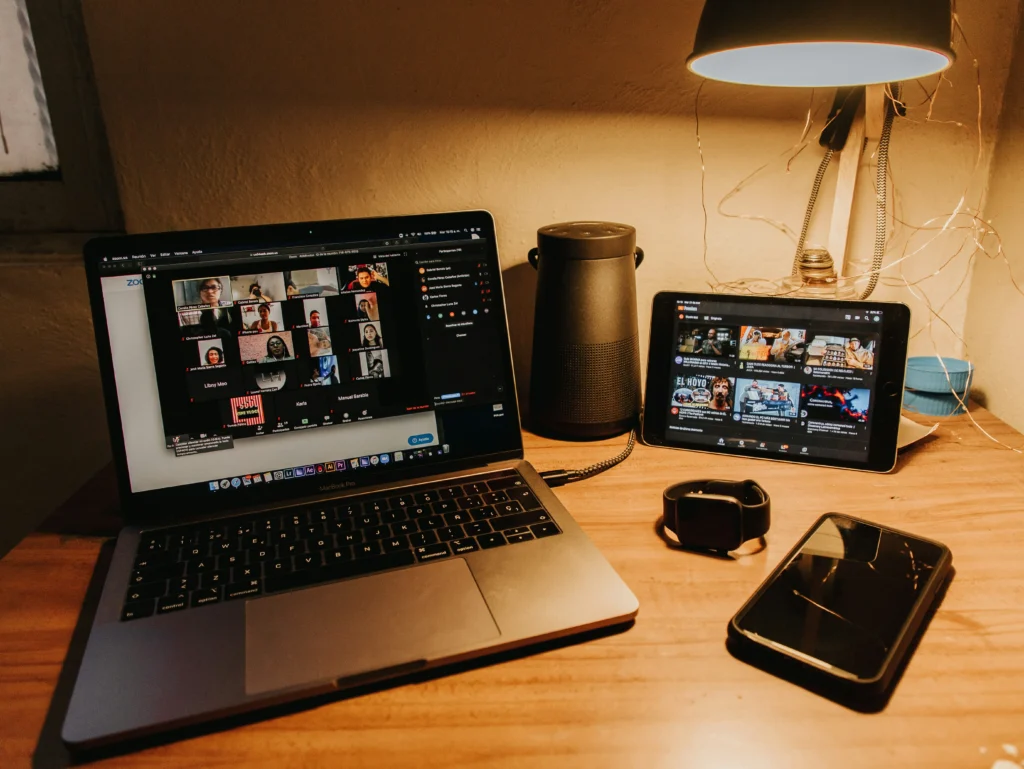
10. Stock Photography and Video Sales
Why it works: Businesses, bloggers, and creators constantly need photos and clips. Even niche images (like “eco-friendly packaging”) sell.
How to start:
- Take clear, high-quality photos/videos.
- Upload to sites like Shutterstock, Adobe Stock, or Pexels.
- Focus on trends: remote work, sustainability, diversity.
Challenges & solutions: Stock libraries are crowded. Choosing under-served niches improves your odds.
Monetization methods: Royalties per download.
Example: A hobby photographer uploaded lifestyle images and makes $100/month passively.
11. Social Media Management for Small Brands
Why it works: Many local shops or freelancers want a presence online but don’t know where to start.
How to start:
- Learn basic scheduling tools (Buffer, Later).
- Offer a starter package (e.g., 12 posts/month + engagement).
- Target small businesses—cafes, local gyms, or artists.
Challenges & solutions: Clients often expect “viral” results. Be clear you provide steady growth and brand presence.
Monetization methods: Monthly retainers ($300–$1,000+ depending on scope).
Example: A college student managed Instagram for two local shops, covering rent with that side hustle.
12. Patreon and Membership Communities
Why it works: People like supporting creators they trust, especially when they get exclusive perks.
How to start:
- Create a Patreon or Ko-fi page.
- Offer tiers (e.g., $3 for early access, $10 for behind-the-scenes).
- Promote at the end of content: “If you’d like to support my work…”
Challenges & solutions: It can feel awkward asking for support. Position it as a way for fans to join your journey.
Monetization methods: Monthly subscriptions, exclusive perks.
Example: A digital artist offers patrons early access to artwork + process videos, earning $400/month.

13. Virtual Workshops and Live Classes
Why it works: People enjoy interactive learning experiences.
How to start:
- Choose a skill (e.g., watercolor basics, meal prepping, freelance tips).
- Host on Zoom, Google Meet, or Eventbrite.
- Charge a small ticket fee ($10–$50).
Challenges & solutions: Attendance may be low at first. Partner with other creators to cross-promote.
Monetization methods: Ticket sales, replays sold as mini-courses.
Example: A writer hosted monthly workshops on storytelling and built both income and a loyal community.
14. Voiceover and Audio Content Creation
Why it works: Audiobooks, ads, and explainer videos need clear narration.
How to start:
- Use a decent mic (~$100).
- Create samples reading scripts.
- Join marketplaces like Fiverr, Voices.com.
Challenges & solutions: Standing out is tough. Niching down (e.g., “children’s audiobook voiceovers”) helps.
Monetization methods: Per-project fees, long-term client contracts.
Example: A freelancer recorded short ad scripts for local businesses, averaging $200 per project.
15. Niche Online Magazine or Zine
Why it works: A digital magazine gives creators authority and can attract both readers and advertisers.
How to start:
- Choose a niche (e.g., sustainable living, indie music).
- Use Canva or Adobe InDesign for layout.
- Distribute via email, PDF downloads, or Issuu.
Challenges & solutions: Time-heavy at first. Start quarterly before moving monthly.
Monetization methods: Ads, subscriptions, affiliate features.
Example: A small “Indie Game Weekly” zine started free, then grew into a $5/month subscription with 500 readers.

16. Print-on-Demand Merchandise with Branded Content
Why it works: Creators can sell merch without holding stock.
How to start:
- Use Printful, Teespring, or Redbubble.
- Design items (quotes, art, logos).
- Promote through your content platforms.
Challenges & solutions: Designs must be unique. Consider inside jokes or niche sayings to stand out.
Monetization methods: Profit per sale.
Example: A podcaster sold quirky mugs tied to catchphrases from the show, adding a fun revenue stream.

17. Content Editing and Proofreading Services
Why it works: With so much content online, many need help polishing their words.
How to start:
- Offer editing for blogs, ebooks, or scripts.
- Use Upwork, Fiverr, or pitch directly to small creators.
- Charge per word or project.
Challenges & solutions: It can be slow to find first clients. Offering a free trial edit often helps.
Monetization methods: Per-project rates ($50–$300+ depending on size).
Example: A student proofread ebooks for indie authors, earning $400/month on the side.
18. Creative Writing Platforms (Substack, Kindle Publishing)
Why it works: Writers can publish stories, guides, or short books directly to readers.
How to start:
- Choose a format: Substack for serialized posts, Kindle for ebooks.
- Write consistently.
- Promote on social channels.
Challenges & solutions: Visibility is tough. Focus on a specific genre (romance, fantasy, business tips).
Monetization methods: Ebook sales, paid newsletters.
Example: A writer released short Kindle stories for $2.99 and built a steady trickle of sales.
19. Animation and Explainer Video Services
Why it works: Businesses and creators need simple animated explainers for products or channels.
How to start:
- Learn tools like Vyond, Canva, or After Effects.
- Start with short animations.
- Sell via Fiverr, Upwork, or direct outreach.
Challenges & solutions: High skill curve. Begin with template-based software to build confidence.
Monetization methods: Per-project pricing ($100–$1,000+).
Example: A freelancer made simple animated YouTube intros, charging $50 each and scaling up.
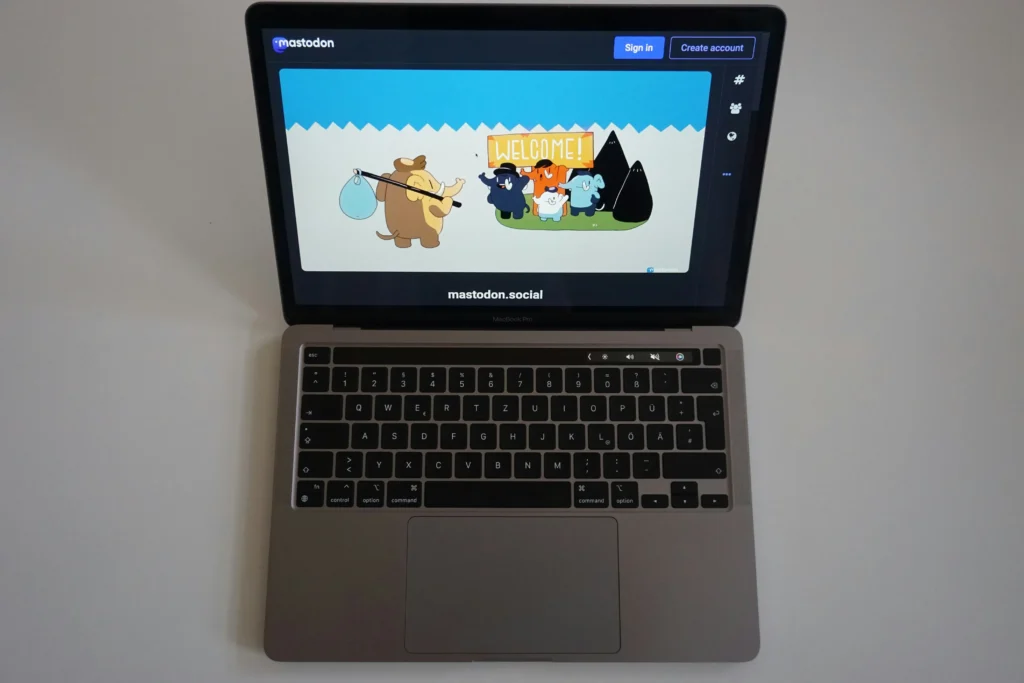
20. Micro-Consulting via Content Expertise
Why it works: Even small creators build niche expertise others want.
How to start:
- Offer 1:1 calls (via Zoom).
- Set packages (e.g., “30-minute Instagram growth consult”).
- Market via LinkedIn or your own audience.
Challenges & solutions: Imposter syndrome is common. Focus on people a step behind you—you don’t need to be the biggest expert.
Monetization methods: Per-session fees, bundled consulting hours.
Example: A blogger offered beginner SEO consults for $50/hour and booked 5 clients a month.
21. AI-Enhanced Content Tools and Services
Why it works: Many people want help using AI tools for content creation but don’t know where to start.
How to start:
- Create prompts, templates, or automation services.
- Sell “done-for-you” AI content packages.
- Offer training workshops on tools like ChatGPT, Canva AI, or Jasper.
Challenges & solutions: AI tools evolve quickly. Stay updated and offer value beyond the tool (like editing and strategy).
Monetization methods: Templates, training, service packages.
Example: A freelancer sold “AI blog post starter packs” for small businesses and quickly found recurring clients.
22. White-Label Content Creation for Agencies
Why it works: Many marketing agencies outsource content writing, video editing, or design.
How to start:
- Build a portfolio of samples.
- Reach out to agencies offering overflow work.
- Agree to work behind-the-scenes (white-label).
Challenges & solutions: It can feel invisible since your name isn’t on the work. But steady agency contracts provide reliable income.
Monetization methods: Retainer agreements, per-project pricing.
Example: A writer produced weekly blogs for agencies, making consistent income without managing clients directly.
From what I’ve seen, content creation isn’t just for influencers with huge audiences—it’s for anyone willing to share knowledge, creativity, or experiences in a consistent way. These 20+ digital business ideas are all possible starting points, and each comes with unique challenges. The good news is that small steps—like posting one blog a week or recording one video at a time—can lead to real progress.
Remember, every journey starts small. Whether you choose blogging, TikTok, podcasting, or a digital product, the most important thing is to start and keep going. Explore other guides here on Nichejar.com for more niche ideas, and don’t be afraid to experiment until you find what feels right.
I hope this guide gave you a few sparks of inspiration. If you found it useful, consider sharing it with someone else who’s curious about content creation, or leave a comment with your own experiences—we’d love to learn from you too.
TLDR
In short: here are the highlights from this guide on creative digital business ideas for the content creation niche:
- Niche blogging: Build long-term traffic and income through SEO and affiliate links.
- YouTube tutorials: Evergreen content that earns ad and affiliate income.
- TikTok micro-niches: Quick growth potential with daily short videos.
- Podcasting: Build loyal audiences and attract sponsors.
- Digital products: Sell ebooks, templates, and guides for passive income.
- Online courses: Teach skills through structured lessons.
- Memberships and communities: Offer exclusive content for monthly fees.
